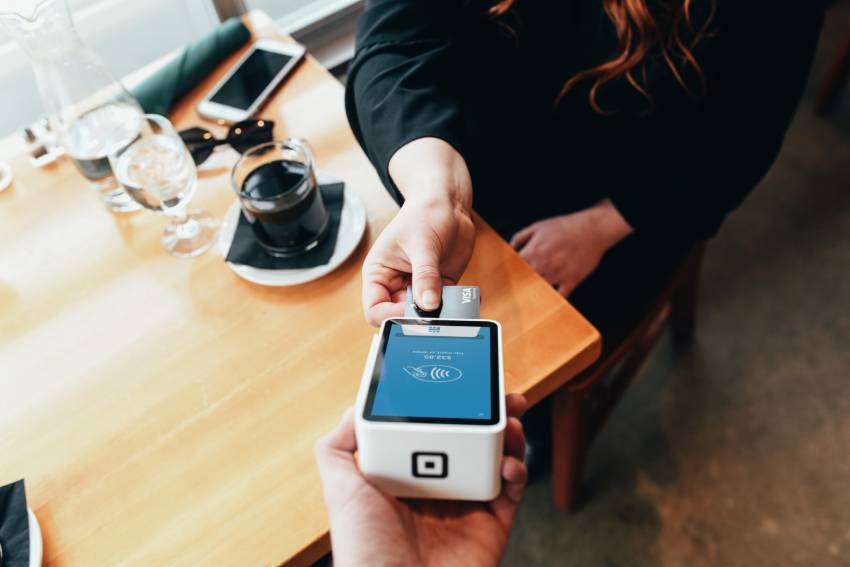Table of contents
What is Pay What You Want pricing?
Pay What You Want, also known as PWYW pricing, is a pricing strategy in which buyers pay the desired price for a particular product, commodity, or service. The approach may sometimes lead to the value of zero. Following the buyer's guidance, one can set a suggested price and a minimum price. In such a case, the buyer can also appeal to PWYW pricing when setting a price higher or even lower than a standard price.
Many given PWYW pricing models establish a special price before purchase. Such a method is known as the ex ante approach. Yet, some buyers appeal to PWYW pricing and engage in price-setting after the consumption experience is presented. Such an approach is known as ex post. In general, Pay What You Want is a buyer-centered method, a form of participatory pricing model.

Essentially, the Pay What You Want model is a relatively simple approach. In simple terms, one can explain the strategy as the following:
- A seller offers a buyer a good-quality product or service.
- The customer experiences the product or service.
- The client decides how much one is willing to pay for a product or service in the final part.
In some cases, sellers can establish a reference price to give buyers a perspective on what a possible price should look like. As a customer-centric model, PWYW pricing works along the following line: “Pay what you want to, and only if you feel like it.” This slogan encapsulates the essence of PWYW's pricing strategy. Yet, one should understand that the Pay What You Want model is not a long-term strategy. Instead, PWYW pricing must be considered a short-term model with specific occasions and reasons.
When does Pay What You Want pricing work?
It is no secret that many marketers have been using PWYW pricing strategies in different situations. Pay What You Want works with reciprocity and human decency as an eligible scheme for selling products.
How does the system work? The answer is simple. Provide clients with products. Add no bills or claims. Let them evaluate the product and choose whether they want to pay for the product or not. This is a simple illustration of how the Pay What You Want model works. Essentially, there is a two-folded business logic behind Pay What You Want. They include the following:
- The first principle is about a company conveying confidence. It means a business is sure that the product is of high quality and is ready to offer customers to set value and price for a product themselves. The first part of the logic indicates a company is sure consumers will like the product or service.
- The second principle behind Pay What You Want is to empower consumers. How? Simply. A business using the strategy offers total control to customers. They can weigh the value and pay a reasonable price. By giving consumers such a degree of control, a company illustrates respect to customers and immensely values their opinion and decision.
Following such logic, there is a simple scheme standing behind the functionality of PWYW pricing. However, it is crucial to note some challenges with how the model works. Offering such a degree of control and power to consumers can backfire. With PWYW pricing in action, dishonest customers receive an opportunity to take the product and walk away without paying a dime. In addition, even honest consumers can be confused concerning what constitutes an “appropriate” price. Considering such obstacles is crucial to avoid financial constraints and employ the model as needed.
Pay What You Want services.
PWYW pricing offers a range of services that can be used for a number of reasons. However, in its essence, the model provides three key services that many companies look for.
1. Understanding consumers’ purchasing behaviors
Knowing how much customers are willing to pay is crucial for understanding whether a business succeeded with the quality of a product or a service. However, people can have a different perceptions of what a product’s value should be. For instance, some might suggest the price of $30, while others push more toward $50. Yet, regardless of the price-setting adopted by consumers, a company receives valuable information concerning purchasing behaviors of its customers. Based on such information, it is possible to make more accurate predictions about different business strategies and product alterations.
2. Increasing attendance of new customers
Another good reason for choosing PWYW pricing is that it leads to new customers. For instance, when offering people to pay what they are willing for a service, consider a ticket to a movie theater, one can artificially boost demand. To illustrate, imagine a ticket costs about $20. However, a business offers people to select a price, and the majority chooses $10, which is lower than the standard price. While the business loses money on the price, it compensates for the growing demand. Naturally, many more people will be willing to go to a movie theater for half the price. It can be a one-time deal resulting in the expansion of the customer pool.
3. Offering a chance to generate more revenue.
Finally, PWYW pricing offers a chance to boost revenue. Understanding purchasing behaviors and the opportunity to grow demand results in the ability to make profits. In such a case, along with a better understanding of what customers are willing to pay for a product or service, businesses get a chance to attract new consumers and make revenues along the way.
Pay What You Want business model.
PWYW's pricing business model stems from particular foundations. One of the first aspects is to engage in the pricing strategy when the demand is high. The evidence indicates that people are willing to pay more when a higher demand for a product or service. In turn, when the demand is lower, PWYW pricing can result in consumers setting much lower prices than companies initially anticipated.
The further part of the business model stems from previous relationships with the given company. In such a case, PWYW pricing often does not work for new businesses. Essentially, the truth is that the model works best with clients who are familiar with the brand or business. At this point, the two factors mentioned above constitute the core of the pricing strategy in question.
Pay What You Want strategy.
PWYW pricing strategy can be successfully used as the approach eliminates the disadvantages of different traditional pricing models. One of the key benefits of the method is to get rid of a feeling of fear concerning a product’s worth in terms of an anticipated price point. With the Pay What You Want strategy, sellers can avoid the challenge of setting the “right” price. The strategy grants control over price-setting and ensures people and their opinions are valued by buyers. The method offers a win-win situation for both parties involved.
Wrapping up
Pay What You Want strategy is a distinct pricing method that proved more advantageous than other conventional pricing approaches. In its essence, the strategy is dedicated to evaluating the consumers’ willingness to pay for a product or service. In turn, for buyers, the method can help boost revenue and better understand purchasing behaviors. Pay What You Want can create a win-win situation for both sellers and buyers when properly used.
FAQ
Find answers to some of the most common questions people have regarding the use of Competera.
What is brand intelligence?
In simple terms, brand intelligence is the collection and interpretation of data concerning a brand. Brand intelligence helps businesses to understand the consumer segment and anticipate consumer behavior.
From which resources is the data on brand intelligence collected?
There are plenty of brand intelligence data sources. The most common ones include customer feedback, news, blog comments, online reviews, social media posts, etc.








